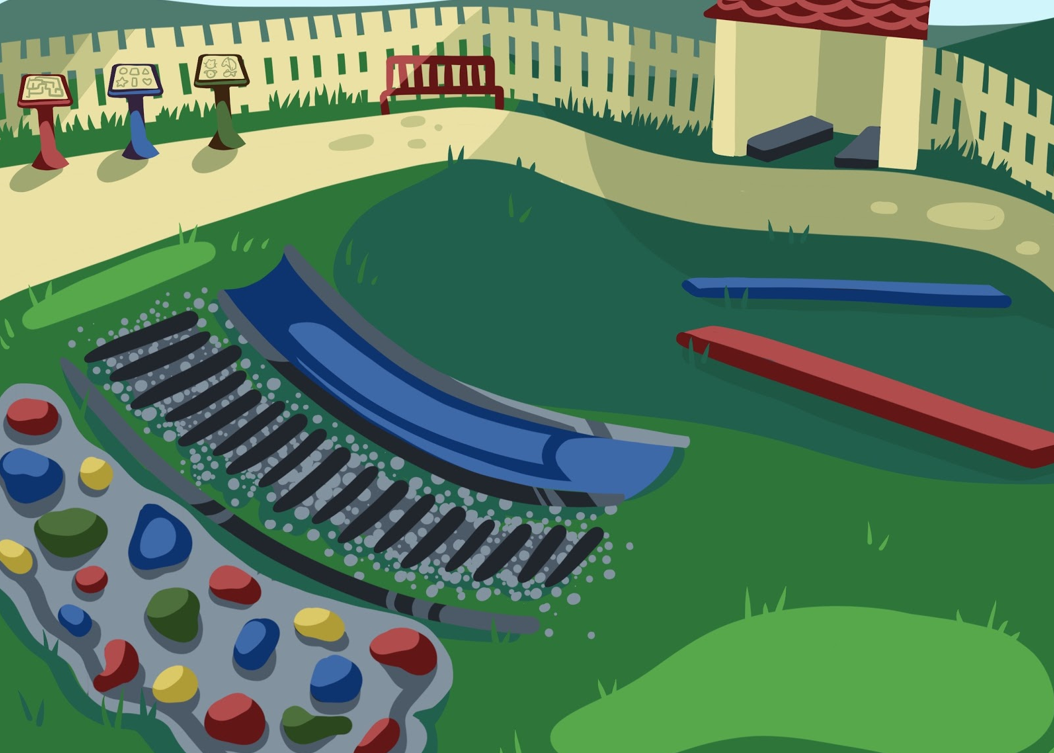
Accessible Playground
for Children with Autism
Project Background
For this project, my team first decided to work on designing accessible playgrounds for kids with disabilities in general. However, as we went on into the user research process, we found the topic too broad given the limited time and the wide range of disabilities that required different accommodations. As a result, we narrowed down our focus to kids with autism, a specific group whose needs have been significantly overlooked in the design of playgrounds.
EVENT
Engineering Design Class Project
TIMELINE
Feb - May 2021
TEAM
Jilian S.
Madeline P.
MY ROLE
User Researcher & Designer
Tools: User Research, Ideation Map, Decision Matrix, House of Quality, Prototyping
THE CHALLENGE
How might we create a supportive play area for children?
Plenty of research have shown the significant impacts play have on a child’s development. However, many existing playgrounds do not seem supportive to autistic children, who often have to struggle with facilities designed only for neurotypical kids.
With our new playground design, we aimed to make playgrounds more accessible to autistic children mainly by addressing their fear of heights, which involved updating and modifying the main structure of a common playground.
USER RESEARCH
What is preventing children with autism from the playground?
When we first set children with disability as our target user, we distributed 20 surveys to parents of both disabled and neurotypical children to gain insights on the overall accessibility of playgrounds. Noticeably, all parents of disabled children believed that current playgrounds are not accessible to their kids.
After narrowing down our focus to kids with autism and conducting relevant research online, I found that height was among the most common fears autistic kids have (Mayes et al. 2013). In the survey responses from parents, there were also similar concerns regarding the children’s fear of heights.
Since most playgrounds we observed have elevated platforms and high steps which could cause fear, we decided that changing the overall structure of the playground is the crucial step towards a better play experience for autistic kids.
USER NEEDS
Generating list of needs for children with autism
Based on results from research and brainstorming, I made a list of key user needs for accessible playgrounds with my teammate, including mentally stimulating games, parental supervision, rest areas, etc.
We then determined their relative importance by rating each need within our group and calculated a a weighted score. Since we learned through research that kids with autism are easily by external stimuli, we decided that providing a comfortable and safe environment would be the key focus of our design.
DECISION MATRIX
Comparing different possible forms of playground
After brainstorming ideas on how to solve autistic children’s fear of heights, we used a decision matrix to evaluate all the possible solutions. By rating how well each solution meet each user need, we identified that a playground integrated into the terrain would be the optimal solution.
HOUSE OF QUALITY
Evaluating the design solution
In the house of quality, I incorporated the customer needs and engineering requirements we identified through user research. This chart was especially useful in helping us organize different ideas, recognize their relative relationships, and derive a comprehensive evaluation of our design solution.
We also compared several existing playgrounds designed for kids with autism to get possible insights for improvements. It turned out that our design did a good job in meeting the needs and requirements we identified in the previous stage. Our solution also seemed more well-rounded than most existing designs.
PROTOTYPE
Illustration of final solution
Illustrated by teammate Madeline
Due to the COVID outbreak, we were not able to meet in person and build actual models for our prototype. Instead, we presented our final solution with a illustration demonstrating all the key elements in our design.
REFLECTIONS
Recognized the importance of accessible design🌻
The project offered me the invaluable opportunity to research on the problems faced by autistic children, an underserved group that I knew little about in the past. The design process provided me good practice in employing human factor design methods, including ways to transfer user needs into specific engineering requirements and arriving at the final solution through comparative analysis. More importantly, it allowed me to evaluate existing playground designs from a unique perspective and recognize how inclusive design can actually benefit not only specific target groups but every potential user.
Admittedly, there were some limitations. We received unexpectedly small numbers of feedback from stakeholders due to actual difficulties in reaching out to parents of autistic kids. Also, we didn’t get to do build actual models for our prototype due to the COVID outbreak, which could have provided us more insights on the layout and overall feasibility of our solution.
